Meet Liliana Maz (co-founder of The Busking Project)

Back in 2018, we were in a dumpling restaurant in Melbourne on our honeymoon, talking about how we’d only been to a cash machine in Australia twice, and both times because we wanted to tip buskers. Nobody else seemed to be using cash.
Out of nowhere, Lily said, “Why don’t we program NFC stickers, so that buskers can use them to take in tips?”
Back in Colombia, we asked our designer, Silvana Callegari, to make something green. The targets are where the stickers would be placed.

Our initial tests didn’t go anywhere, partly because back then, iPhones couldn’t yet use NFC tags by default.
Fast forward to January 2020, and we saw this on a restaurant table, also in Melbourne. If NFC was being used by restaurants, maybe it was finally time to try it out on the street!

This was my first scribble. It included the tap, a URL and a QR code:

I then went for more of a hockey-puck design (like the restaurant device above), which could be stuck to some kind of backing (a ‘board’) with more info:

We also thought that if we could put three disks of different values together, audiences could choose how much to tip, reviving the pay-what-you-like essence of busking in a cashless world:

Another innovation was that these boards should be so inexpensive that a busker could afford to display several at the same time. That way, people could tip from where they’re standing, and the busker could process multiple, simultaneous cashless tips, meaning no more queueing for the card machine.
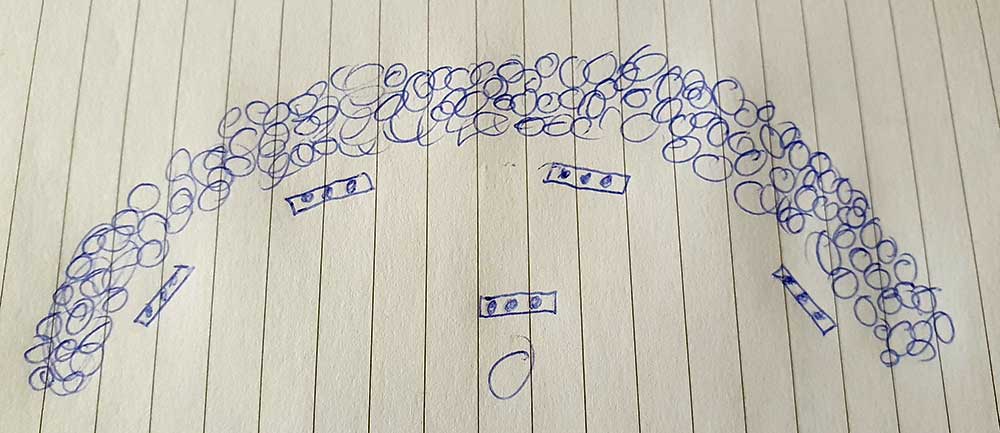
With the idea fully fleshed out, we started looking for grants. The pandemic was fully underway, and buskers worldwide were hurting. Not only did they generally not qualify for government funds (neither arts grants nor business relief), but cash was apparently a thing of the past now (buskers have since found out that its death has been greatly exaggerated). So, we applied to the Paul Hamlyn Foundation with this idea. And they said yes!
Now we had a budget for materials. So, we bought a bunch of wood, cork, acrylic and foam disks, plus a whole bunch of tags, to see which combinations had the best ‘scan range’ (how far the phone can be from a tag and still read it).

Around this time, our dog, Pisco, rolled in something he shouldn’t have, and we had to wash him. It’s not related, but what a photo:
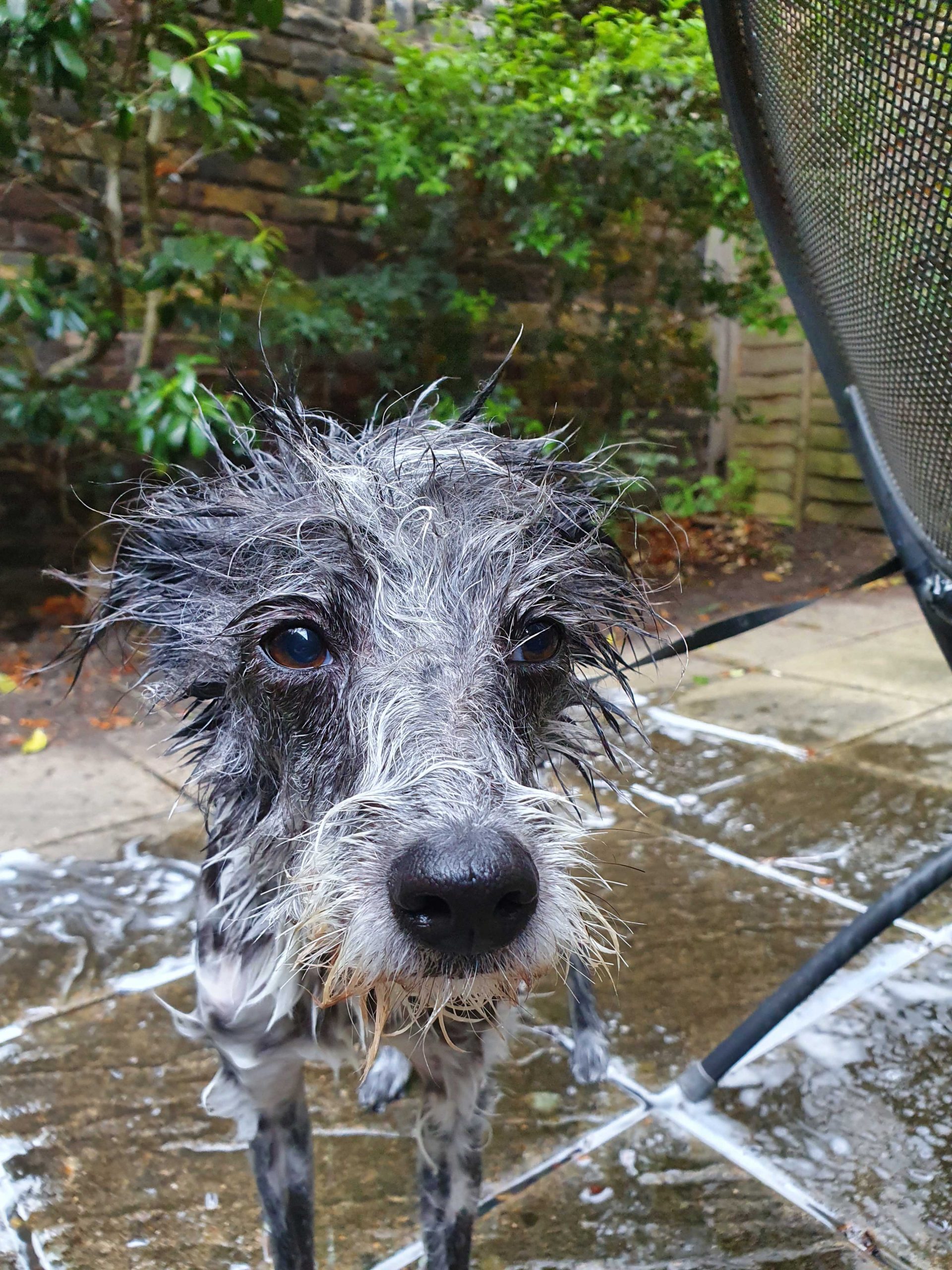
We settled on one NFC tag in particular: the 38mm NTAG213, with a scan range of about 5 cm (reduced to 3-4 cm when surrounded by plastic). Inside that little thing lies a coil of wire, a radio transmitter and a tiny little microchip:
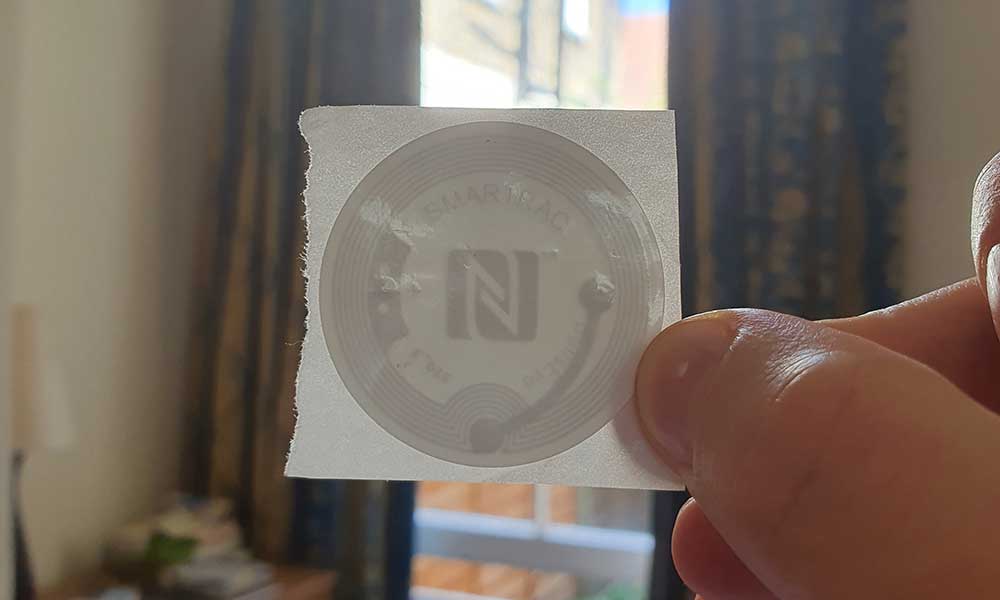
Lily decided the new designs should look as much as possible like a payment terminal, so people would instinctively know to ‘tap’ it with their phones. She then made a bunch of cutout designs we could rearrange:
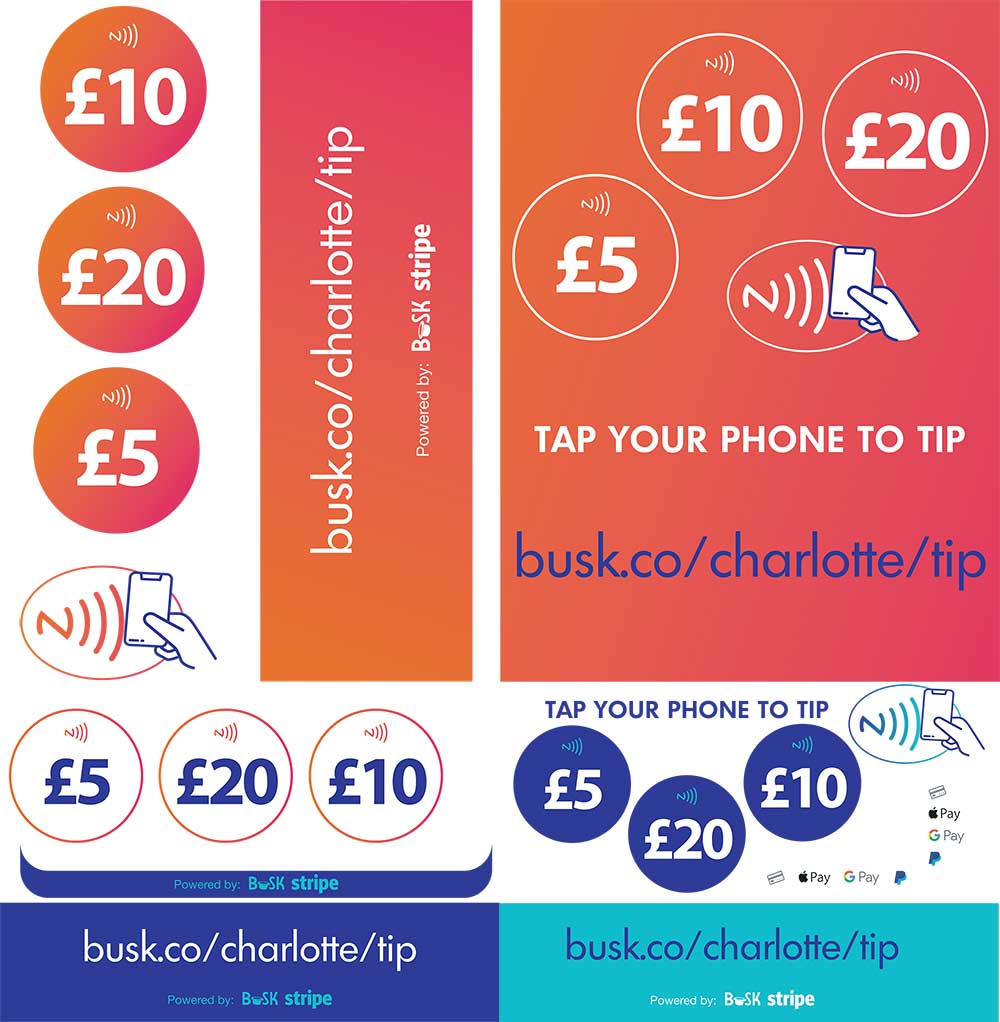
These were the boards we came up with:
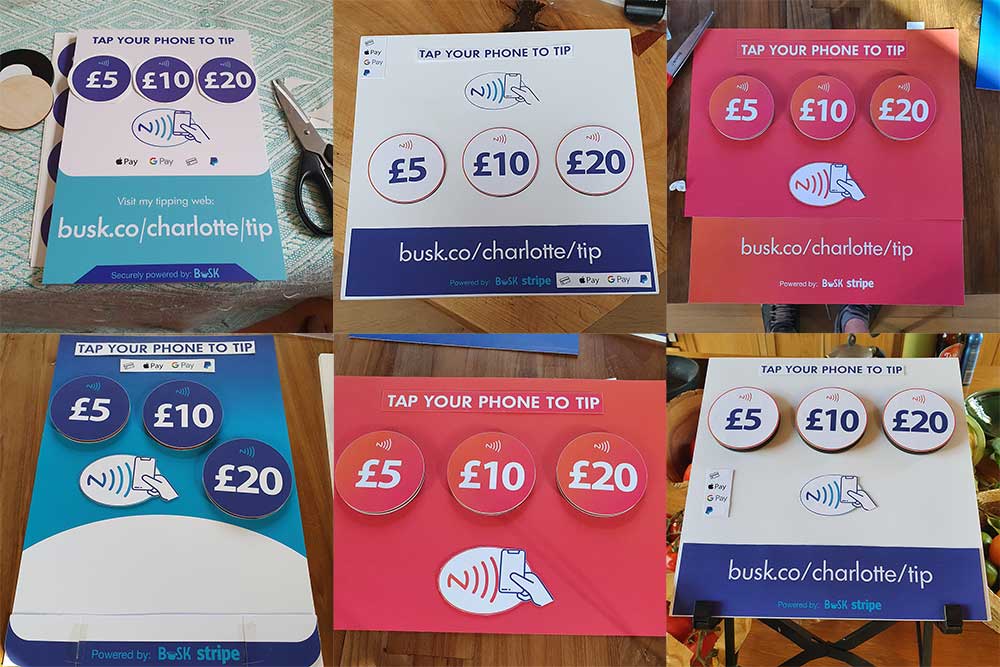
Buskers voted on the colour and design they liked best. So, we made a few tweaks, did some more materials research online, and ordered some ‘foamex’ boards to play with.

Then, onto actually constructing the things:
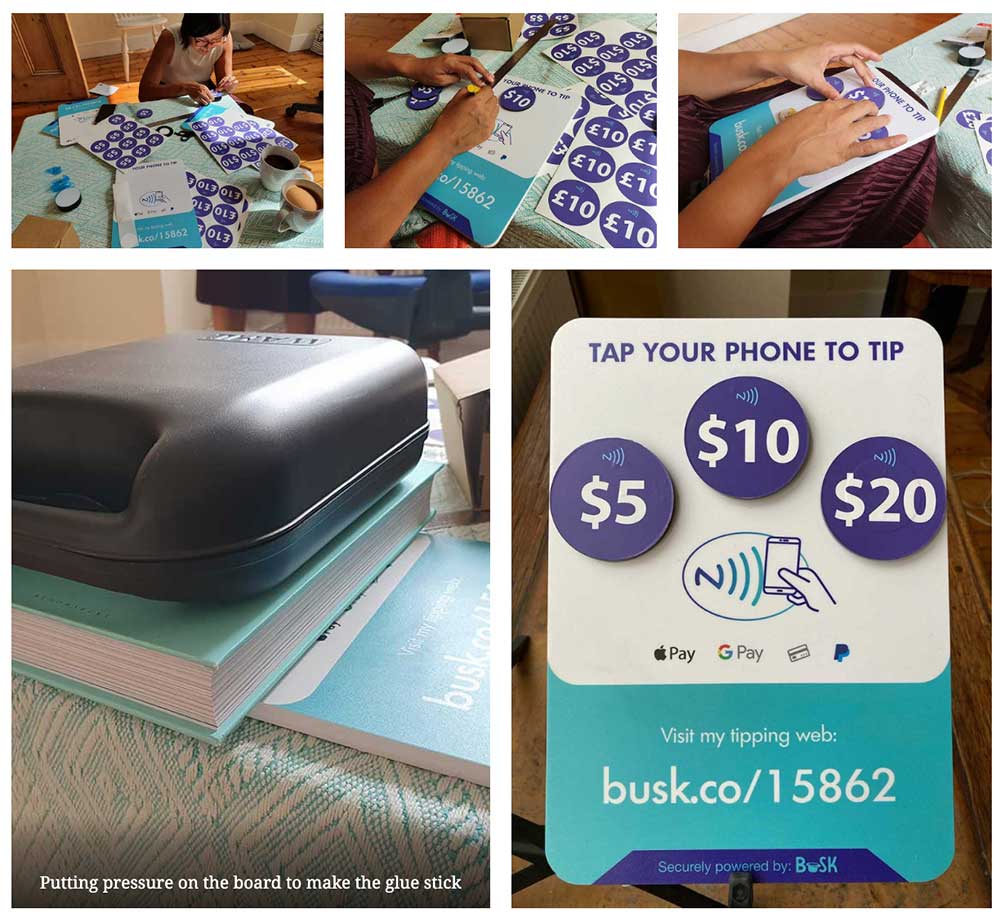
Next up, some water tests. We were warned that foamex can warp in a rain / sun combo, so we left the board outside for a week, in the British summer rain. Not a single issue, and the board still worked fine.
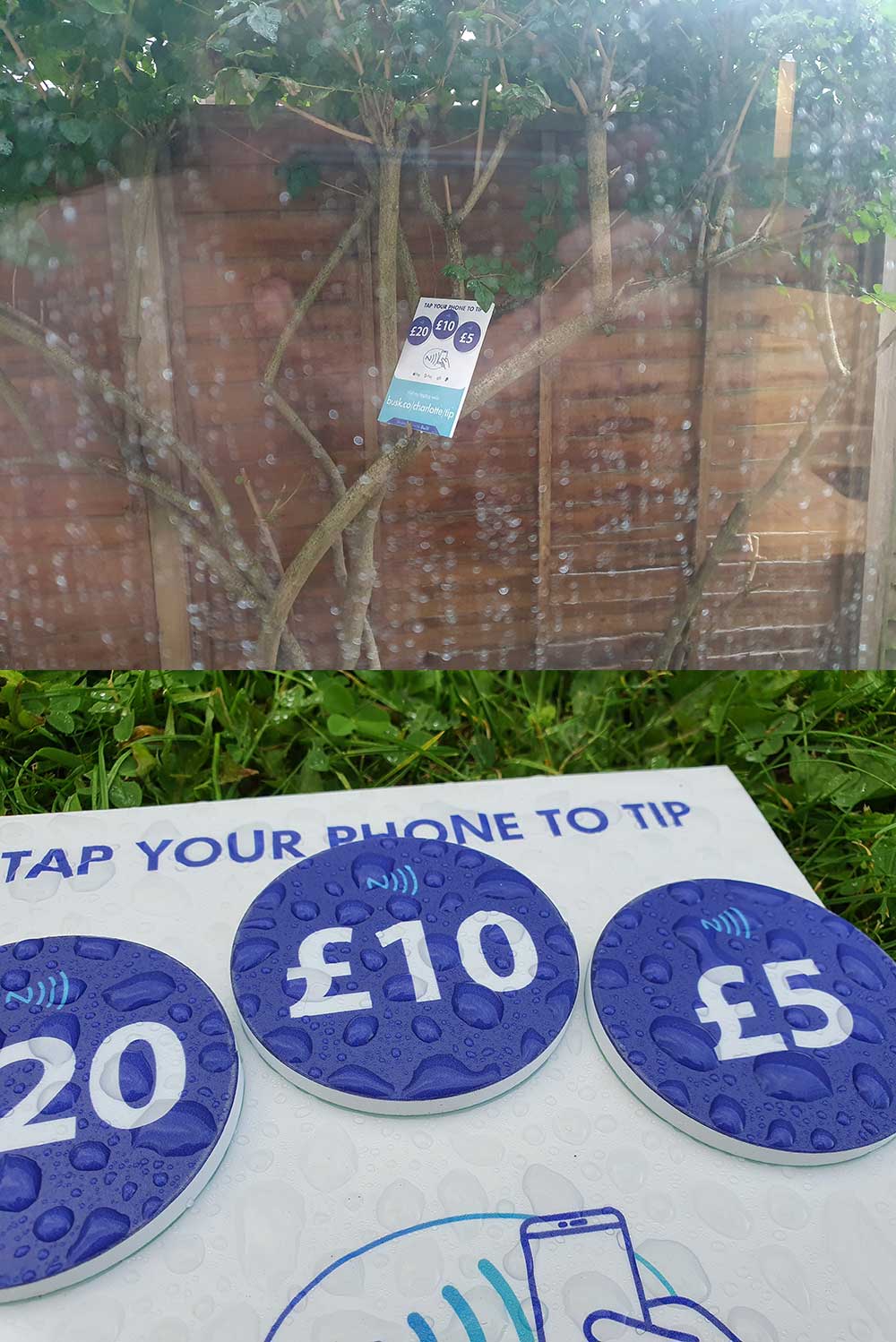
But how waterproof are they really? We submerged the sign in a sink for three hours, and not only did it still work afterwards, it had no sign of damage at all!
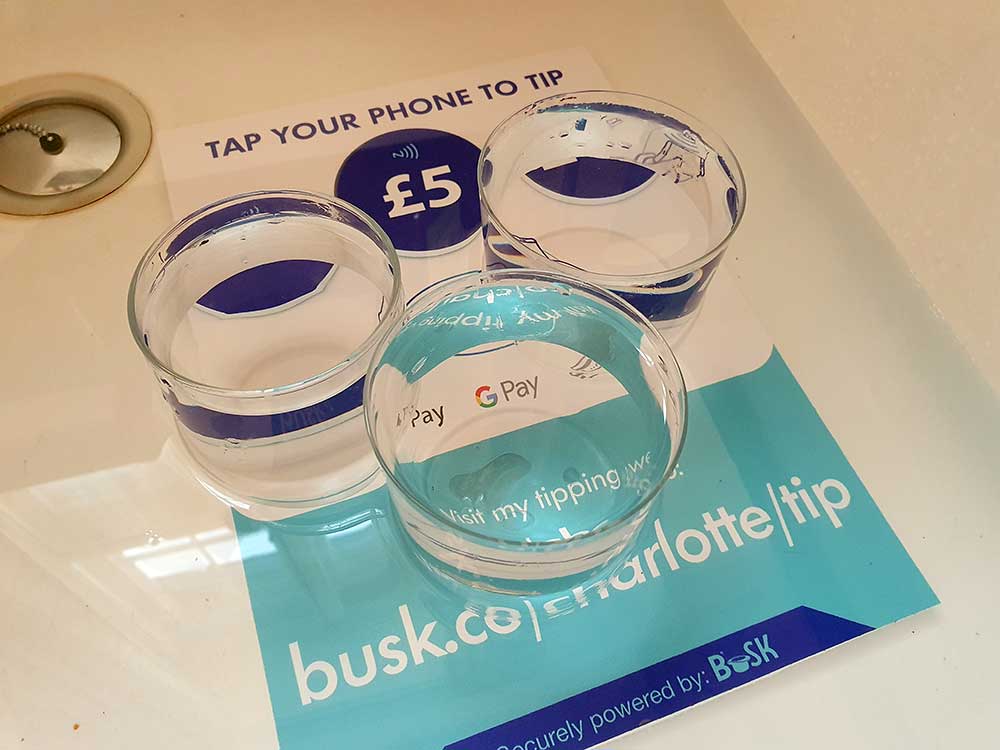
Satisfied, we sent out a survey to see if buskers wanted to take part in the test. A huge number you responded. We picked out fifty performers, put in the order to the foamex factory, and waited for the signs to turn up. And finally, after two months of work, the materials arrived!

There were quite a lot of minor printing errors on the boards. We sent these photos to the factory, and they made us replacements for the worst of them (they’d had an issue with their laminating machine, and a couple of the signs had even trapped fly wings!)
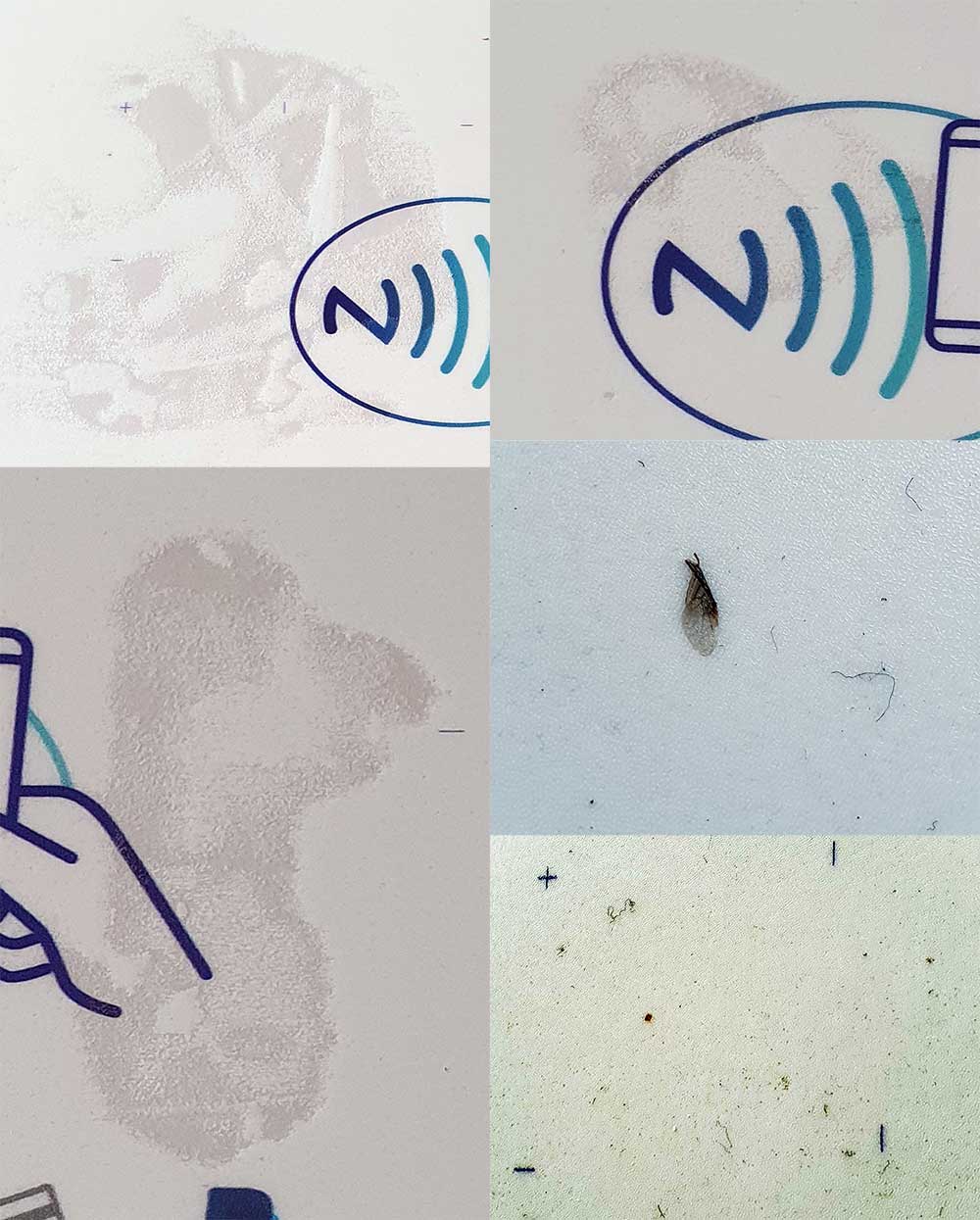
The good ones, however, were ready to build. I had to stick an NFC tag to the back of every disk, then glue each disk in place. The first glue we tried was Sugru, a mouldable glue that functions pretty-much like blue tack, just in a more permanent way. Our first test in London was with sugru, and it worked pretty well.

Unfortunately, when we did it in bulk, the sugru failed. We had to remove as much glue as possible, then do a test of a new, plastic-on-plastic glue test. That also failed!
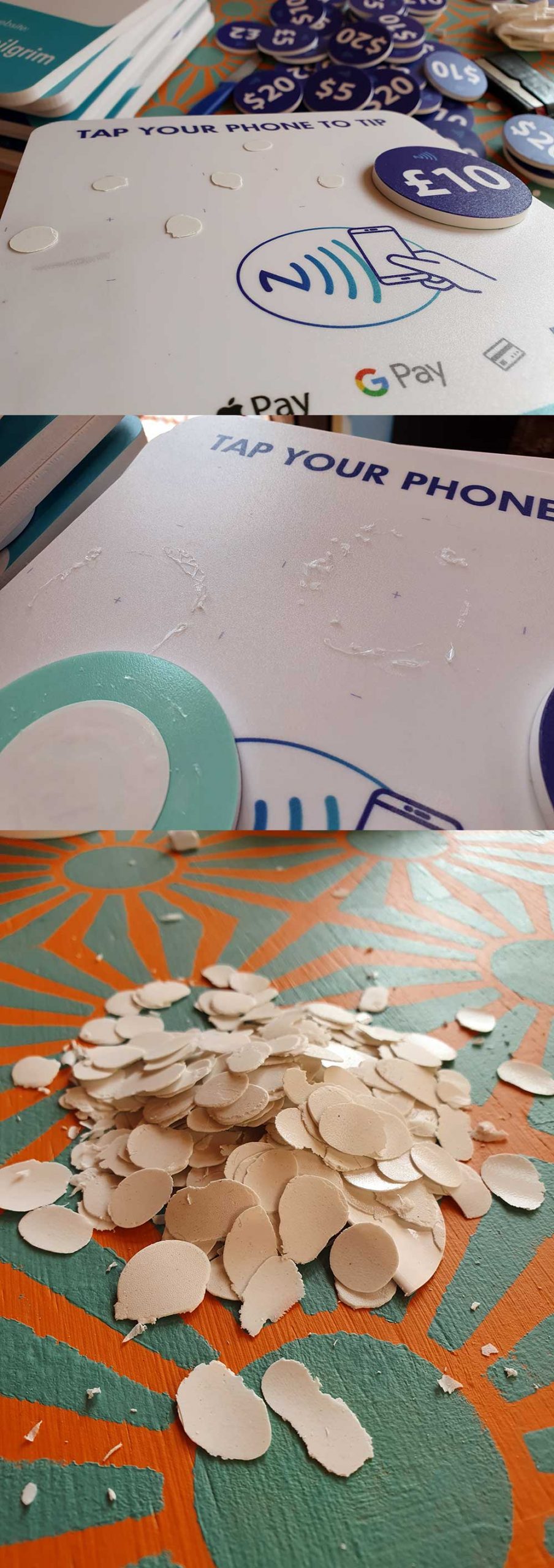
Time for an industrial glue.
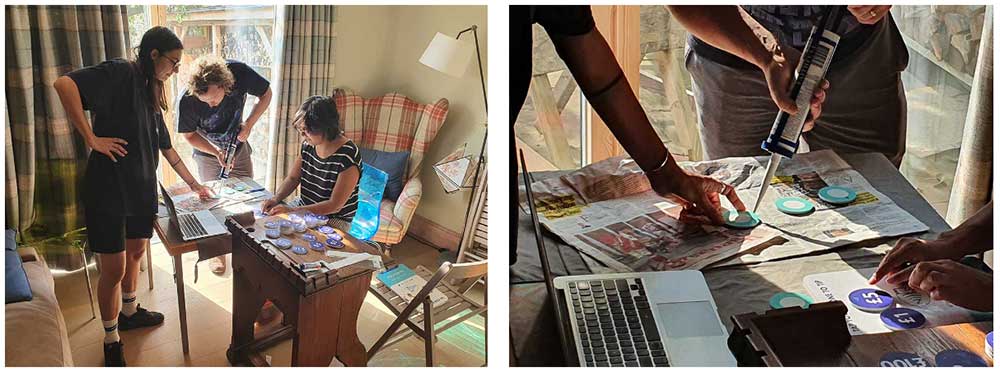
All done! Time to dry. And time to give them a name. We sent out another survey, and the winning name was “BuskPay”.

And there we had the finished product. ~70 boards, ~250 disks, glued, dried and ready to send out.

Off to the mailbox…

And just a few short days later, buskers were using them in the street!
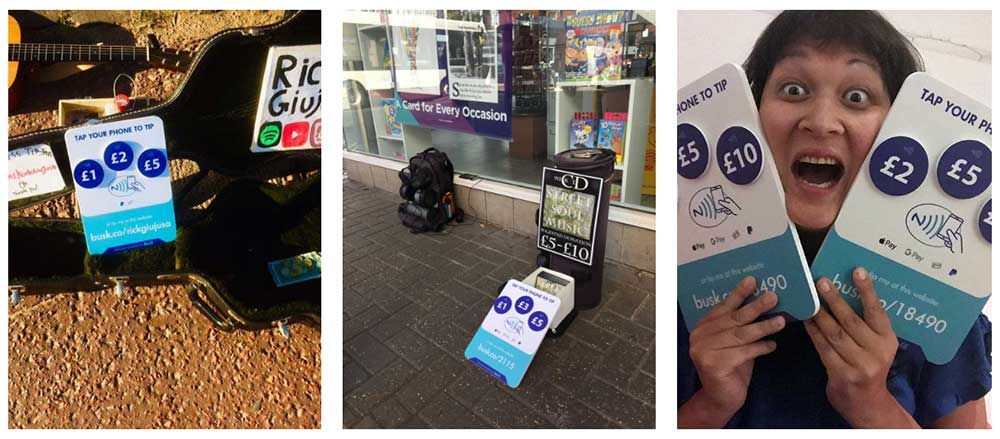
They were also already innovating. One performer drilled a couple of holes in their board, tied some wire (with a matching colour of course) to it and it could now be tied pretty much anywhere.
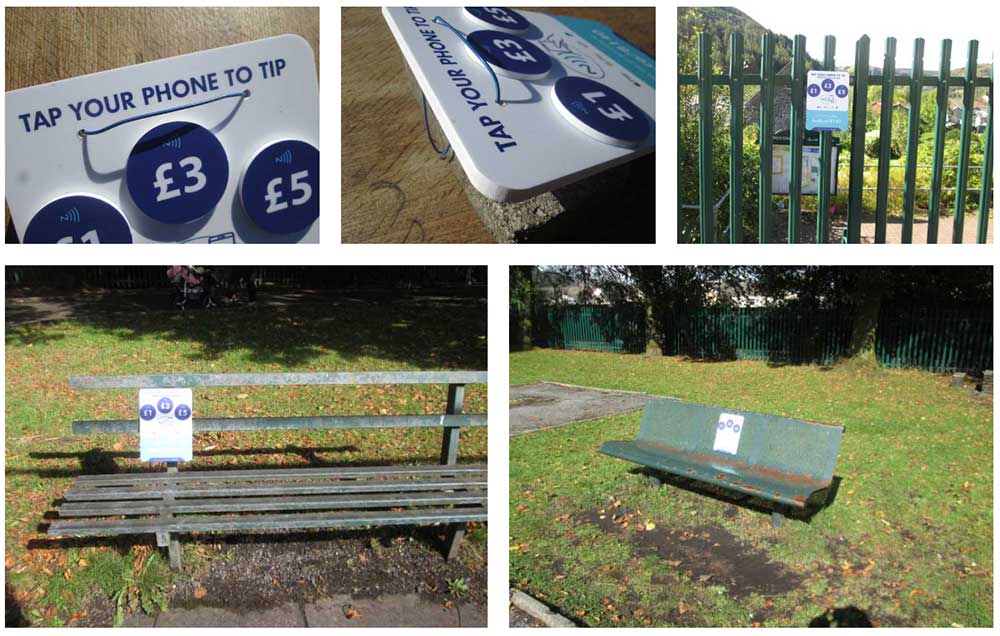
And finally, look at what Liam Collins (a.k.a. The Stunt Runner) has done with his signs, by attaching them with an iPad stand to his rings of death. Incredible!



Now we just have to sit and wait to see if it works. It’s been an intense couple of months trying to get this done. We hope you like the result!
